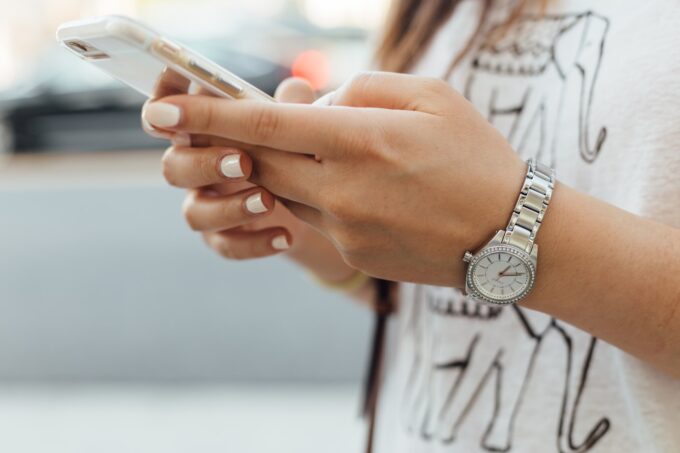Mobile applications are something we use every day, from checking the email in the morning while traveling to work, to playing games, scrolling through social media, completing bank transactions, using time and money management apps, and so on. If you think that you don’t use them a lot, you are probably wrong, since a lot of the everyday activities are tied to these applications.
And as an everyday user, you know that you receive updates every few days or weeks. There is no perfect app, and as time goes by, and more users are actively using it, they report different issues and bugs, and the developers are using their experience to improve the product. If you try to remember how Facebook or Instagram looked like a few years ago, you will see that there are a lot of improvements since then, and even new features added. All these things are happening to improve the user experience, but also to fix the bugs, and provide more services by using only one app, without leaving it.
If you are a developer, you probably know these things because you are the one who is working on those upgrades. Once you develop an app, you need to test it a few times to detect those bugs, before you launch it. No matter if you are building it from scratch, or you are using builders like Andromo, you can always improve the product. But, how to recognize if your app needs some improvements? Here are the “warning” signs for that:
1. Lack of features

Source: unsplash.com
As time goes by, you need to add more features to the app, to stay competitive on the market. That means, even if you think you don’t need that, your users may not think the same. So, be open to listening to their feedback, and if they report they miss some key features, you shouldn’t ignore that. Some of them can be integration within other apps, synchronization with other devices, and anything else that will let your clients choose yours, instead of the other apps. You need to follow the trends, and keep a step with them, so you can still be competitive on the market but keep your original purpose too.
2. Huge design trends
When it comes to design, it’s so easy to miss the trends and end up with a functional app with an outdated design. Maybe when you launched the app first, you had the best one in the world, but things are changing, and by doing some improvements every now and then, you can ensure you will keep your users visually satisfied. It shouldn’t be a complete redesign. For example, Twitter has had the same concept for years, but they are changing the fonts or the way the icons look. Once they even adjusted the shade of blue they are using. So, minor changes usually make a huge impact. If you decide to redesign it, you can easily shock your users, and the surprises are not always welcomed nowadays. So, if you plan a complete redesign, announce it in advance. Also, when you do minor improvements, you are practically serving it step by step, and let the users accept it better.
3. Bad performance

Source: pexels.com
If the app crashes every time, or it freezes the phone, you have to do something to change that. Also, you need to always adapt the design and the code to the new concepts. In the past, apps consumed a lot of memory on smartphones, but that shouldn’t be the case today. You must monitor the users’ behavior, so you can detect the weak spots of your app, and fix them before they even report them. No one wants a bad app to take space on their phone, and you don’t want a lot of people to delete yours. Use all the feedbacks and monitoring results to make sense and improve the bad performance of your app.
4. The code is old
If the codebase is outdated, you need to switch to another one and keep up with the trends worldwide. You shouldn’t feel angry because of this, and sometimes that means you need to reinvent the whole thing all over again. But, the tech evolution can be really cruel how fast it goes. As a developer, you always need to keep your codebase updated. That means you need to commit to this app a lot of your time, but that’s the only way to stay competitive and recognizable among the others.
5. You receive reports that it drains the battery

Source: pexels.com
If some app drains the battery life, then something is wrong with it, and you need to run a diagnostic process, to detect what’s happening. Sometimes, a tiny improvement can change the whole thing. Also, if the app usage slows down the whole phone, you again need to repair the whole thing and offer a better product to your users. Heat issues while using the app should also be considered as a problem that needs to be fixed, so you can prevent deleting the app from the devices.
6. Fewer people are using it
If there is a huge drop in the number of active users, then probably something is wrong. Maybe the competition released something better, or maybe you don’t put enough effort to engage them. You can track the activity, and if you see that fewer people are interested in using it, then it’s time to revise the whole concept and offer something new to them.
Conclusion
We are living in a time when technology is living the biggest evolution days. Being an active part of it requires consistency, but also keeping up with the new trends and improving the products we offer. Run proper research before redesigning the app, or even before making tiny improvements. See if the users really like it, because, unfortunately, sometimes the app is simply outdated, and you need to find a new challenge to work on it, instead of fixing the things that won’t ever work out again.







